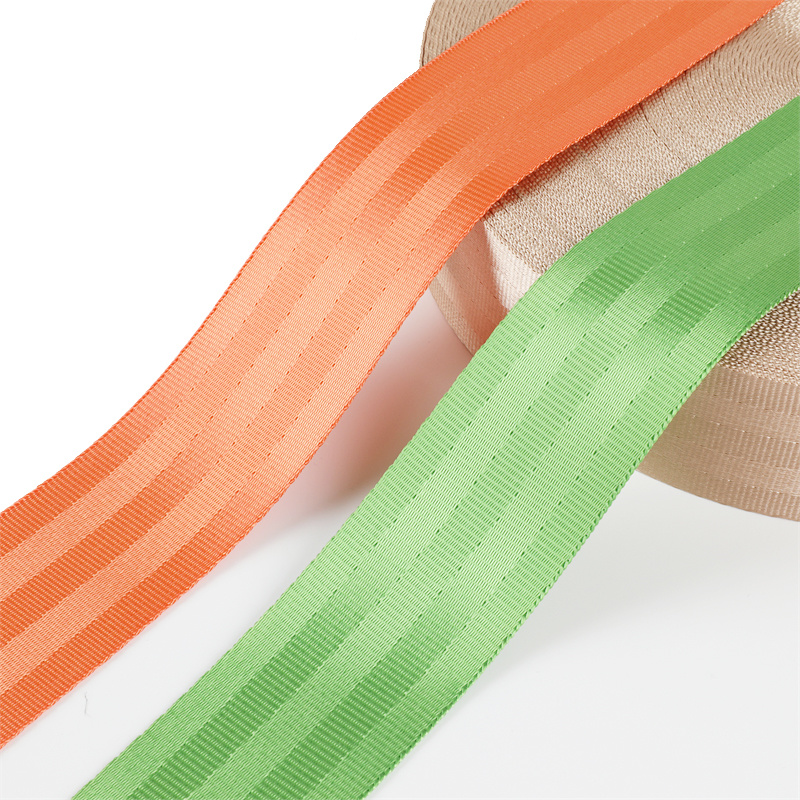The Benefits of Using Outdoor Webbing in Your Outdoor Gear
The Benefits of Using Outdoor Webbing in Your Outdoor Gear
Outdoor enthusiasts constantly seek ways to enhance their gear's performance, and one of the most effective yet often overlooked components is outdoor webbing. This robust material plays a crucial role in various outdoor applications, from backpacks to climbing harnesses. In this article, we will explore the benefits of using outdoor webbi
Jul 24,2025

The Benefits of Using Outdoor Webbing in Your Outdoor Gear
Outdoor enthusiasts constantly seek ways to enhance their gear's performance, and one of the most effective yet often overlooked components is outdoor webbing. This robust material plays a crucial role in various outdoor applications, from backpacks to climbing harnesses. In this article, we will explore the benefits of using outdoor webbing in your outdoor gear, how to choose the right webbing for your needs, and some frequently asked questions.
Understanding Outdoor Webbing: A Brief Overview
Outdoor webbing is a type of strong, flat material commonly made from nylon, polyester, or polypropylene. It is designed to withstand harsh environmental conditions while providing excellent strength-to-weight ratios. Available in various widths, colors, and tensile strengths, outdoor webbing can be used in multiple applications, making it an indispensable part of outdoor gear.
Types of Outdoor Webbing
Choosing the right type of webbing is essential for ensuring the performance and reliability of your gear. Below are some common types of outdoor webbing:
Nylon Webbing
Nylon webbing is known for its incredible strength and elasticity. It is ideal for applications requiring high tensile strength and durability, such as climbing harnesses, dog leashes, and backpacks. However, nylon can absorb water, which may lead to mildew if not dried properly.
Polyester Webbing
Polyester webbing offers excellent UV resistance and does not absorb water as nylon does. This makes it highly suitable for outdoor applications exposed to sunlight and moisture, such as straps for tents, tarps, and outdoor furniture.
Polypropylene Webbing
Polypropylene webbing is lightweight and offers resistance to water, mold, and mildew. It is often used in applications like marine gear, dog collars, and various outdoor equipment. However, it is less durable than nylon and polyester, making it suitable for lighter-duty applications.
Why Choose Outdoor Webbing for Your Gear?
The benefits of incorporating outdoor webbing into your gear are numerous. Here are some compelling reasons to consider using outdoor webbing in your outdoor adventures:
1. Exceptional Strength and Durability
Outdoor webbing is engineered to withstand rigorous use, making it perfect for demanding activities like climbing, hiking, and camping. Its robust construction ensures that it can handle heavy loads without tearing or fraying, providing you with the confidence you need in the great outdoors.
2. Lightweight and Compact
Despite its impressive strength, outdoor webbing is surprisingly lightweight and easy to pack. This characteristic is particularly beneficial for backpackers and travelers who prioritize minimizing weight without compromising on performance.
3. Versatility in Applications
Outdoor webbing can be used in a myriad of applications, making it a versatile choice for various gear. From securing tents and tarps to creating adjustable straps for backpacks and harnesses, outdoor webbing can do it all.
4. Enhanced Safety Features
When it comes to outdoor activities, safety is paramount. The strength and reliability of outdoor webbing make it a preferred choice for safety gear such as harnesses and slings. Using high-quality webbing reduces the risk of equipment failure, allowing you to focus on your adventure.
5. Easy to Customize
Outdoor webbing can be easily cut, sewn, or tied, allowing for endless customization options. This adaptability enables users to create gear tailored to their specific needs, whether it's a custom dog leash, a unique backpack strap, or a personalized climbing harness.
How to Choose the Right Outdoor Webbing
Selecting the appropriate outdoor webbing requires considering several factors. Here’s what you need to know:
1. Understand the Application
Before purchasing outdoor webbing, identify the specific use you have in mind. Different applications require different types of webbing, so understanding the demands of your activity is crucial.
2. Consider the Load Capacity
Each type of outdoor webbing has a different tensile strength. Make sure to check the load capacity to ensure your webbing can handle the weight you intend to use it for safely.
3. Evaluate Environmental Conditions
Consider the environmental conditions your gear will be exposed to. If you're using the webbing outdoors, choose materials that can withstand UV rays, moisture, and extreme temperature fluctuations.
4. Look for Quality Construction
Always opt for high-quality webbing from reputable manufacturers. Look for features such as reinforced stitching, abrasion resistance, and certified load ratings to ensure durability and safety.
Common Uses of Outdoor Webbing in Gear
Outdoor webbing finds its way into a variety of gear. Below are some common applications and how they enhance outdoor experiences:
1. Backpacks and Bags
Outdoor webbing is often used in the straps and supports of backpacks. Its strength ensures that bags can carry heavy loads without failing, providing comfort and stability during hikes or camping trips.
2. Climbing Gear
In climbing gear, webbing is crucial for harnesses, slings, and belay devices. Its high tensile strength and durability are essential for ensuring climbers' safety while scaling heights.
3. Tents and Tarps
Outdoor webbing is frequently used to secure tents and tarps, providing stability and strength against wind and rain. Its resistance to UV rays ensures longevity, making it a reliable choice for temporary shelters.
4. Outdoor Furniture
Many outdoor furniture items use webbing for support, such as chairs and loungers. The lightweight yet strong nature of webbing helps maintain structural integrity while allowing for easy transport.
5. Dog Gear
Dog leashes, collars, and harnesses often incorporate outdoor webbing for its strength and durability. This ensures that your pet is secure and comfortable during outdoor excursions.
Care and Maintenance of Outdoor Webbing
To ensure the longevity of your outdoor webbing, it’s essential to maintain it properly. Here are some care tips:
1. Regular Cleaning
Dirt and debris can accumulate on webbing over time. Regularly clean it with mild soap and water to maintain its integrity and appearance. Avoid using harsh chemicals that can degrade the fibers.
2. Inspect for Wear and Tear
Regularly inspect your outdoor webbing for signs of wear, such as fraying or discoloration. If any damage is detected, replace the webbing immediately to avoid accidents during use.
3. Store Properly
When not in use, store your outdoor gear in a cool, dry place away from direct sunlight. This will prevent UV damage and prolong the lifespan of the webbing.
Frequently Asked Questions (FAQs)
1. What is the best type of webbing for outdoor use?
Nylon and polyester webbing are generally considered the best choices for outdoor use due to their strength, durability, and weather resistance.
2. Can outdoor webbing be repaired?
Minor frays can sometimes be sewn or tied off. However, if the webbing shows significant damage or weakness, it’s best to replace it to ensure safety.
3. How do I determine the right width of webbing for my project?
The width of webbing depends on the application. For heavier loads, opt for wider webbing, while narrower webbing is suitable for lighter applications.
4. Is outdoor webbing waterproof?
While some types of webbing, like polypropylene, are water-resistant, others, like nylon, can absorb water. Always check the specifications of the webbing you intend to use.
5. How much weight can outdoor webbing support?
The weight capacity varies significantly between types of webbing. Always refer to the manufacturer's specifications for accurate load ratings.
Conclusion
Incorporating outdoor webbing into your gear can significantly enhance your outdoor experience by providing durability, strength, and versatility. Understanding the different types of webbing available, how to choose the right one, and how to maintain it will ensure that your gear performs at its best for years to come. Whether you’re hiking, climbing, or simply enjoying the great outdoors, utilizing high-quality outdoor webbing is a smart choice that can elevate your adventures and keep you safe.
Related Posts
Contact Us
E-mail:
Phone/WeChat:
Factory Address:
No. 601 ShiXing Road, Jimei District, Xiamen, 361024, China







